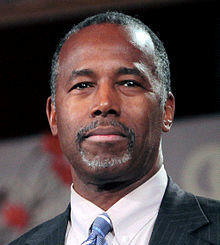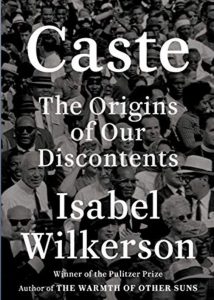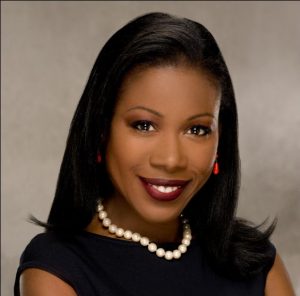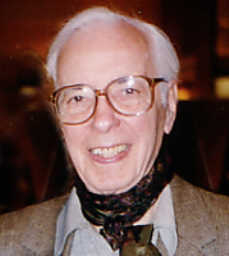GETTING IT
 I didn’t get it…. Not in the 1990’s working with the North American Family Institute (NAFI), which had developed a psychologically based boot camp model to work with juveniles who would otherwise be sent to Detention Centers. The job was to establish strong community relations to support the Institute’s work after the 90 day Court sentence was completed.
I didn’t get it…. Not in the 1990’s working with the North American Family Institute (NAFI), which had developed a psychologically based boot camp model to work with juveniles who would otherwise be sent to Detention Centers. The job was to establish strong community relations to support the Institute’s work after the 90 day Court sentence was completed.
Boot camps had become the new way of working with juveniles. Most were based on a military model but the Institute had secured contracts from Maryland, Florida and Ohio to implement its approach.
In order to keep these teens from returning home and into more trouble, the challenge was to find them safe and secure places to live, recruit the local school system to help them graduate from high school and to find them jobs.
In Ft. Myers, Florida the first two steps were easy but it was a surprise to find a “red-neck” businessman (both and bred in Florida) to care enough about black and brown bad boys to agree to train them to install air conditioning systems, not only a chance at a decent job but one that might be a steady, good paying career.
All he said was “No drugs, no back-talk and no missing work and they can work for me.”
Cleveland, Ohio seemed perfect. A young, black investment banker took a genuine interest and brought together twenty-seven young black businessmen to hear the story of juveniles who needed a break.
These men, clearly successful, had beaten the system…had succeeded without question…perfect role models.
They were told about the young men at the local boot camp, where they came from, what difficulties they had experienced, the fights, the petty crimes, Mothers who had pimped them out for drug money…all of it. They couldn’t go home and survive. It was hopeless without help.
They sat quietly when the story was over. Our host looked expectant but no one said a word…not a single word.
Did they have any questions?
And then one of the men said “What makes you think we’re like them?”
And the meeting was over. Not a single offer of help.
And I didn’t get it.

What makes you think we’re them?
Institutional racism.
The term has a prison-like quality. Cold. Prison bars. Barbed wire.
In our society institutional racism means that the systems we live with and depend upon – systems like education, healthcare, justice – are indelibly racist…providing one course of life for one group of people, the majority, and quite another course of life for the minority.
This systemic racism is centuries old with only meager, marginal changes – driven by unending cruelties and then the national protests that followed. These protests have resulted in opportunities for those whose talents and ferocious desire to succeed have overcome all the obstacles existing to maintain control and keep them in their place.
But add the sum total of change over more than 400 years and you don’t get very much. And the battles are formed over and over again.
Our criminal justice system drives most of the outrage from minorities as it promises one thing for all but only practices it for the majority.
The majority now is getting tired of protests by Black Lives Matter “…because it’s only about a handful of police murders of unarmed black men…” In fact, there have been more than 205 such deaths in the past 18 months.
 Our public education system which now fails all children across this nation, has also failed to end segregated schools. Today, New York City has the most segregated education system in America. Are the best teachers assigned to poor black and brown students? Do their teachers even believe those kids have the desire and ability to learn? No expectations…no results.
Our public education system which now fails all children across this nation, has also failed to end segregated schools. Today, New York City has the most segregated education system in America. Are the best teachers assigned to poor black and brown students? Do their teachers even believe those kids have the desire and ability to learn? No expectations…no results.
And when it comes to disciplinary matters, Black girls are five times more likely to be suspended from school than white girls, seven times more likely to receive multiple out of school suspensions, three times more likely to be referred to law enforcement than white girls.
Our healthcare system, driven only by money, has broken down under the pandemic. Minorities make up a huge percentage of people working in healthcare who we now recognize and honor as ‘essential’ workers.
Yet Black women are 2 and a half times more likely to die in childbirth than white women. The Center for Disease Control and Prevention found that black women with at least a college degree were 5.2 times more likely to die in childbirth than white women with the same education. The medical field agrees that the horrific pre-natal and OB-GYN care they receive are clear examples of systemic racism.
So this is systemic racism. And yet that question “Do you think we’re them?” and the attitudes behind it still seemed beyond understanding.
A CASTE SYSTEM
 In her stunning book “Caste: The Origins of Our Discontents” Isabel Wilkerson has spent” decades of research into our country’s unseen caste system…we need a new language if we are to understand our history, ourselves and how to move forward. “
In her stunning book “Caste: The Origins of Our Discontents” Isabel Wilkerson has spent” decades of research into our country’s unseen caste system…we need a new language if we are to understand our history, ourselves and how to move forward. “
Here is some of how Ms. Wilkerson, winner of a Pulitzer Prize, the National Humanities Medal and the 2010 National Book Critics Circle Award for nonfiction, discusses the new language of caste as a visionary explanation of America’s racist systems:
America has an unseen skeleton: its caste system, which is as central to its operation as are the studs and joists that we cannot see in the physical buildings we call homes. Caste is the infrastructure of our divisions. It is the architecture of human hierarchy, the subconscious code of instructions for maintaining, in our case, a 400 year social order. Looking at caste is like holding the country’s X-ray up to the light.
A caste system is an artificial construction, a fixed and embedded ranking of human value that sets the presumed supremacy of one group against the presumed inferiority of other groups on the basis of ancestry and often immutable traits, that would be neutral in the abstract but are ascribed life and death meaning in a hierarchy favoring the dominant caste, whose forbears designed it. A caste system uses rigid, often arbitrary boundaries to keep the ranks apart, distinct from one another, and in their assigned places.”

Wilkerson here describes three caste systems in history…the millenniums-long system in India, the short system in Nazi, Germany and “the shape shifting, unspoken, race-based caste pyramid in the United States. Each version relied on stigmatizing the lowest ranked people at the bottom to rationalize the protocols of enforcement. A caste system endures because it is often justified as divine will, originating from sacred texts or the presumed laws of nature, reinforced throughout the culture and passed down through generations.
The hierarchy of caste is not about feelings or morality. It is about power – which groups have it and which groups don’t. It is about resources – which groups are seen as worthy of them and which are not-who gets to acquire and control them and who does not. It is about respect, authority and assumptions of competence – who is accorded these and who is not…caste guides each of us often beyond the reaches of our own awareness. It imbeds into our bones an unconscious ranking of human characteristics and sets forth the rules, expectations and stereotypes that have been used to justify brutalities against entire groups within our species.
In the American caste system, the signal of rank is what we call race, the division of humans on the basis of their appearance. In America, race is the primary tool and the visible decoy for caste.
If we have been trained to see humans in the language of race, then caste is the underlying grammar that we encode as children, as when learning our mother tongue. Caste, like grammar, becomes an invisible guide not only of how we speak but also of how we process information, the autonomic calculations that figure into a sentence without our having to think about it.
What people look like, or rather the race they have been assigned or are perceived to belong to, is the visible cue to their caste. It is the historic flashcard to the public of how they are to be treated, where they are expected to live, what kinds of positions they hold, whether they belong in this section of town or that seat in a boardroom, whether they should be expected to speak with authority on this or that subject, whether they will be administered pain relief in a hospital, whether they are more or less likely to survive childbirth in the most advanced nation in the World, whether they may be shot by the authorities with impunity.

The anthropologist Ashley Montagu wrote “that the idea of race was in fact, the deliberate creation of an exploiting class seeking to maintain and defend its privileges against what was profitably regarded as an inferior social caste.”
Caste and race are neither synonymous nor mutually exclusive. They can and do coexist in the same culture and serve to reinforce each other. Race, in the United States, is the visible agent of the unseen force of caste. Caste is the bone, race the skin. Race is what we can see…Caste is the invisible infrastructure which holds each group in its place. Its very invisibility is what gives it power and longevity…it is an ever- present through line in the country’s operation.
Caste is rigid and deep; race is fluid and superficial, subject to periodic redefinition to meet the needs of the dominant caste in what is now the United States…whoever fits the definition of white in whatever point in history was granted the legal rights and privileges of the dominant caste. Perhaps more critical and tragic at the other end of the ladder, the subordinated caste too has been fixed from the beginning as the psychological floor beneath which all other castes could not fall.
What does racism mean in an era when even extremists won’t admit to it? What is the litmus test for racism? Who is racist in a society where someone can refuse to rent to people of color, arrest brown immigrants en masse or display a Confederate flag but not be “certified” as a racist unless he or she confesses to it or is caught using derogatory language or slurs? The instinctive desire to reject the very idea of current discrimination on the basis of a chemical compound in the skin is an unconscious admission of the absurdity of race as a concept.
Caste, on the other hand, predates the notion of race and has survived the era of formal state-sponsored racism long officially practiced in the mainstream The modern-day version of easily denied racism may be able to cloak the invisible structure that created and maintains hierarchy and inequality. But caste does not allow us to ignore structure. Caste is structure Caste is ranking. Caste is the boundaries that reinforce the fixed assignments based upon what people look like. Caste is a living, breathing entity.
Casteism is the investment in keeping the hierarchy as it is in order to maintain your own ranking, advantage or privilege or to elevate yourself above others or keep others beneath you. For those in marginalized castes, casteism can mean seeking to keep those on your disfavored rung from gaining on you, to curry the favor and remain in the good graces of the dominant caste, all of which serve to keep the structure in place. Like the cast on a broken arm, like the cast in a play, a caste system holds everyone in a fixed place.”
In order to illustrate how the caste system must be broken to end racism, Wilkerson uses the reality of owning a very old home which had a significant leak in the ceiling corner of the living room. Any number of contractors had come to give her their opinion of a ‘good fix’ but when all was said and done, the only way to make it right, was to tear the entire ceiling down and redo it completely.
If the very foundation in a building is suspect it must be redone. If America’s Constitution is our foundation, changes must be made.
THEM
To those 27 Black businessmen, a white guy was seeing them as part of the World which produced the troubled young men getting out of a juvenile boot camp. And at the same time, because of the very idea of Caste, they were seeing themselves in the same way despite their success. Their abject refusal to help speaks for itself. One must come to the same conclusion for the likes of Carson and Steele.
They think we see them as ‘them’ because the caste system has driven their thinking to feel the very same way about themselves.

“If America’s Constitution is our foundation, changes must be made.”
What changes?
I’ve heard it said that racism is an opinion held by someone, harmless in itself. What is deplorable is racial discrimination, based perhaps on such opinion.